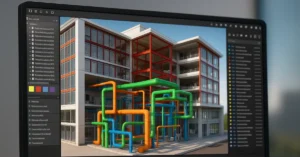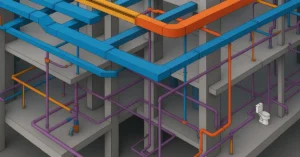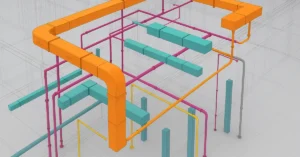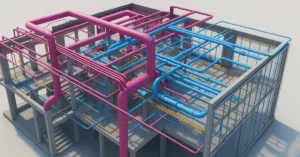Discover Brutalist buildings in Abu Dhabi
Abu Dhabi, the capital of the United Arab Emirates, is often associated with gleaming skyscrapers, cutting-edge innovation, and visionary urban planning. Yet hidden within this futuristic skyline is a different kind of architectural story—one told through concrete, stark forms, and minimalist expression. These are the brutalist buildings in Abu Dhabi, often overshadowed by modern steel-and-glass towers but representing a significant chapter in the city’s rapid evolution.
While Brutalism may seem more synonymous with European and Soviet-era urban planning, its core principles found resonance even in the Gulf region during the 1970s and 1980s. Abu Dhabi, at the threshold of economic transformation, sought architectural styles that were both cost-effective and symbolic of progress. Enter Brutalism, which brought with it boldness, honesty of materials, and the ability to withstand harsh desert climates.
In this detailed exploration, we unveil the underrated brutalist buildings in Abu Dhabi—from iconic civic institutions to quietly functional public utilities—highlighting their significance, design features, and cultural legacy.
Understanding Brutalism in a Desert Context
Before diving into specific structures, it’s important to understand how Brutalism was adapted to Abu Dhabi’s geography, climate, and socio-economic background. Characterized by exposed concrete (béton brut), repetitive geometric shapes, and monolithic forms, Brutalism aligns surprisingly well with the arid desert environment.
Concrete’s thermal mass helps insulate buildings against extreme temperatures, and the simplicity of design resonated with early modernist visions of a streamlined, forward-thinking Gulf. In a region where visual symbolism plays a crucial role, Brutalism also offered a powerful architectural identity: pragmatic yet commanding.
Moreover, the early years of Abu Dhabi’s development saw collaborations with European architects and planners, many of whom were inspired by modernist and brutalist philosophies. This cross-cultural blend shaped a distinctive local variation of Brutalism.
Top Brutalist Buildings in Abu Dhabi
1. Central Bank of the UAE
Location: Corniche Road, Abu Dhabi
This imposing structure is a landmark example of institutional Brutalism in the Gulf. Designed in the 1980s, the Central Bank of the UAE embraces solid, fortress-like geometry. The bold façade, dominated by vertical concrete fins and minimal ornamentation, projects strength and transparency—qualities befitting a financial institution. It also features deep-set windows and overhangs, both of which help reduce solar gain.
2. Abu Dhabi National Oil Company (ADNOC) Headquarters – Old Building
Location: Corniche Street, Abu Dhabi
Before ADNOC moved to its new glass tower, the oil giant’s earlier headquarters represented classic Gulf Brutalism. Completed in the late 1970s, the structure showcased rough-textured concrete and functionalist design. Though less photographed today, it played a pivotal role in the emirate’s corporate identity and is still remembered as an architectural milestone.
3. Al Ittihad Newspaper Building
Location: Al Ittihad Street, Abu Dhabi
Designed with a distinctly brutalist influence, this building reflects the minimalist design approach of the time. Featuring exposed concrete facades, strong horizontal lines, and recessed windows, the newspaper building combined practical layout with bold architectural personality. Its design was emblematic of the late 20th century’s faith in mass communication and national progress.
4. Abu Dhabi Municipality Building
Location: Salam Street, Abu Dhabi
A prime example of civic Brutalism, the Municipality Building is characterized by its grid-like façade, solid concrete exteriors, and monumental entrance. Built during the emirate’s early urban planning phase, it aimed to represent governance through structure: disciplined, functional, and accessible. Despite occasional renovations, its core architectural form remains intact.
5. Cultural Foundation Building
Location: Al Hosn Area, Abu Dhabi
Though often associated with Islamic modernism, the Cultural Foundation’s massing and exposed concrete forms echo Brutalist roots. Built in the late 1970s, the building integrates raw materials with minimalist aesthetics and public accessibility. It houses galleries, a library, and a theatre, symbolizing an era when cultural infrastructure began to flourish alongside economic growth.
6. Abu Dhabi Chamber of Commerce and Industry (Old Building)
Location: Hamdan Street, Abu Dhabi
Once a centerpiece of the city’s commercial activities, the original Chamber building had strong brutalist cues. While newer developments have shifted the skyline, this structure’s clean lines, repetitive modular design, and shaded concrete slabs made it a functional yet striking presence.
7. Apartment Complexes in Al Zahiyah and Al Khalidiyah
The residential blocks built during the 1970s and 80s in these neighborhoods exhibit unmistakable brutalist influences. Modular balconies, raw exteriors, and vertical shafts break the monotony of long facades. These complexes were part of Abu Dhabi’s rapid urban expansion, providing essential housing while maintaining modernist efficiency.
Why Brutalism Worked for Abu Dhabi
Brutalism offered a set of practical and symbolic solutions to Abu Dhabi’s architectural needs during its post-oil boom transformation. First, it was cost-effective and fast—concrete could be poured, shaped, and assembled quickly to meet high demand.
Second, it resonated with the leadership’s desire to project strength and modernity. Brutalist buildings, with their fortress-like appearance and mass scale, became architectural metaphors for resilience and ambition. They were especially suited for government institutions, banks, and housing authorities aiming to instill stability.
Third, they reflected international architectural movements. Abu Dhabi’s visionaries collaborated with architects from Europe, South Asia, and the Americas. Many of these professionals were trained in modernist design schools where Brutalism held strong sway.
Public Reception and Cultural Shift
Brutalist buildings in Abu Dhabi often evoke mixed reactions. While architectural historians appreciate their form and legacy, the general public sometimes sees them as outdated or harsh. This sentiment isn’t unique to the UAE—globally, Brutalism has gone through cycles of rejection and revival.
In recent years, there’s been a subtle yet noticeable shift. Younger residents and creatives have started to photograph, document, and appreciate the rugged elegance of these structures. Social media accounts dedicated to Middle Eastern architecture are bringing new visibility to Brutalist buildings.
Moreover, with the rise of sustainability and adaptive reuse, these older buildings are being reconsidered for refurbishment rather than demolition. Their solid construction and passive cooling potential make them suitable for eco-conscious upgrades.
Preservation Challenges and Opportunities
One of the main threats to Brutalist buildings in Abu Dhabi is rapid redevelopment. The city’s economic dynamism often favors new construction over conservation. Old brutalist buildings, particularly those not officially listed as heritage sites, risk being replaced by high-rise towers or luxury malls.
However, initiatives are slowly emerging. Some architects and urbanists advocate for a hybrid approach—retaining the structural core while upgrading facilities. Others push for legal heritage protection and public education campaigns. There’s a growing realization that losing these buildings would mean erasing vital pages of the city’s architectural narrative.
Examples from other cities—such as the rehabilitation of brutalist icons in London, Boston, or Tokyo—provide inspiration. Abu Dhabi could adopt similar frameworks for preservation, supported by both private stakeholders and government planners.
The Role of Brutalism in Abu Dhabi’s Architectural Identity
Today, Abu Dhabi’s skyline is dominated by glass-clad skyscrapers and futuristic designs. Yet, the brutalist structures remain as grounding elements—reminders of a formative era when the city was still defining itself.
They offer lessons in restraint, function-driven design, and contextually appropriate construction. Their bold silhouettes stand out in a sea of modern uniformity, offering texture and contrast.
Furthermore, Brutalist buildings often served the public—from municipal services to cultural centers—emphasizing accessibility over elitism. This inclusive design ethos is worth revisiting in contemporary urban planning.
Conclusion
Brutalist buildings in Abu Dhabi are a testament to the city’s bold architectural experiments during a transformative era. Though often overshadowed by newer developments, these concrete forms continue to shape the capital’s urban memory and identity.
Far from being relics, they are powerful reminders of ambition, functionality, and vision. With thoughtful preservation and renewed public interest, these structures could become cultural landmarks for future generations.
By recognizing and celebrating Abu Dhabi’s brutalist legacy, we open new avenues for understanding the city’s evolution—from a quiet coastal town to a global capital with architectural layers as rich as its history.
If you’re interested in learning more about architecture firms in Europe, check out this comprehensive list of the top 50 firms compiled by Archgyan. From innovative startups to long-established industry leaders, this list has it all. Take a look and discover some of the most inspiring and influential architecture firms in Europe today.
If you’re interested in architecture and want to learn more about this amazing field, subscribe to our podcast on youtube
For more SketchUp tutorials, head to https://www.sketchupguru.com










